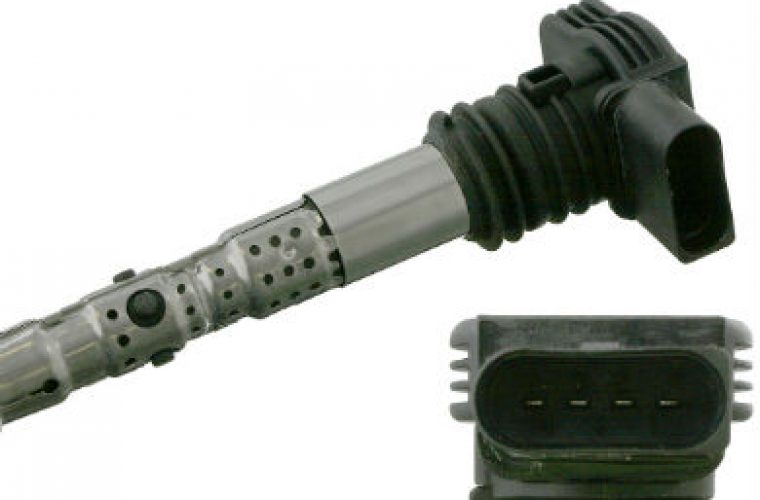Linked to the car’s ECU, the ignition coil controls the sequence and current to the spark plugs, and is vital to the running of the engine.
In petrol engines, the ignition coil is located in a vehicle’s ignition system in order to convert a car battery’s low voltage, of around 12 volts, to the thousands of volts needed to create an electric spark in the spark plugs and ignite the fuel.
Febi say high quality ignition coils ensure more efficient engine performance and reliability, along with lower fuel consumption.![]()
How it works
The ignition coil consists of two coils; a primary winding which has relatively few turns of heavy wire, and a secondary winding which has thousands of turns of thin wire – both windings are wound around each other.
The primary winding is connected to battery voltage and its earth can be switched on and off by the engine control unit (ECU).
The secondary winding is connected to the spark plug.
When the primary winding is switched on, the current flow creates a strong magnetic field around both windings.
When it is switched off the magnetic field collapses, moving over both the primary and secondary windings.
This induces a high voltage in the secondary winding which causes a spark at the spark plug.
The voltage needed to jump from one electrode to the other depends on the width of the electrode gap, the electrical resistance in the spark plug or ignition leads, the air/fuel mixture, the compression pressure/engine load and temperature of the spark plug.
The level of voltage required can vary from 5,000 volts up to 25,000 or more.
All modern variations of ignition coils, including single coils and coil rails, work in a similar way with the exception of capacitive discharge coils. ![]()
Ignition coil failures
Heat and vibration can damage the coil’s insulation, but the biggest cause of ignition coil damage is voltage overload, which is caused by poor quality or faulty spark plugs and/or HT leads.
Febi recommends fitting new spark plugs, and HT leads where applicable, at the same time as replacing a faulty ignition coil.
Find Febi’s range of ignition coils on Febi Live, sign in or register by clicking ‘more details’ below.








Chris Pilcher
About ten thousand miles back I had to fit new HT spark leads to my 1987 Toyota carina 1.6 liter the care had the done seventy thousand miles, the old leads caused the car to come to a dead stop. Now at eighty five thousand I have had to fit a new coil. In the “old days” when the coil was a seperate unit and not on the engine it lasted “forever”. Also when plugwires were plain copper they never gave in, and radio noise suppressors “sp” were as units on the ends of the coils they worked just as well.
Christopher Pilcher
When fitting the new BOSCH coil I found, on my garge shelf, another old Bosch coil, this first made in in Japan, the second and the new in China. As there are now THREE coils in my possesion I guess, that the one just fitted is the third in eighty six and a half thousand miles (8665O).
I find the OLD (and not yet replaced wires to plugs) have a restance of 0,4K ohm /cm, new wires are 0,27K ohm /cm.